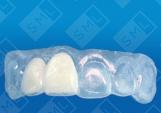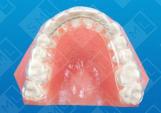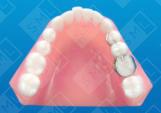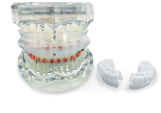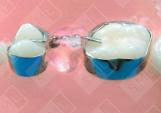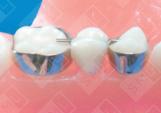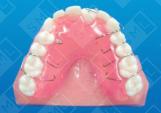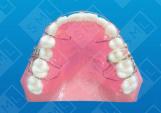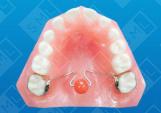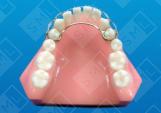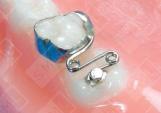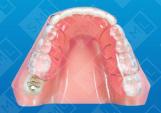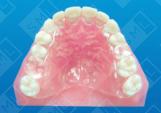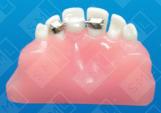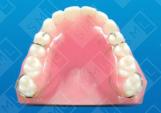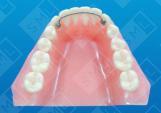
Periodontal Services
When it comes to properly managing the stomatognathic system, a patient's periodontal, occlusal and restorative needs must be taken into consideration. Tooth loss, drifting teeth, tipped molars, posterior bite collapse, anterior flaring, and occlusal trauma are some of the problems associated with periodontal disease...and periodontal disease must be controlled. Before attempting to complete restorative work, all traces of disease must be eliminated. When a periodontal patient exhibits flared interiors and a loss in vertical dimension, it is not enough to merely control the disease process. The loss in vertical and the flared anteriors must also be addressed.
Because your treatment approach is case dependent, it is important to have many tools at your disposal...and with the help of some simple appliances, you will be able to exercise greater control of your treatment plan. These appliances can serve to realign teeth; level infrabony defects; create a harmonious gingival lip line relationship; maintain and stabilize a compromised dentition; and re-establish a proper occlusal plane.
Just remember, that before beginning any active appliance therapy, thorough root planing and curettage must be completed in order to eliminate the active disease process. Don't overlook maintenance, either. When patients have lost some of their bony support, mechanical retention is often needed to maintain stable occlusion. This can easily be accomplished with intro-coronal and extra-coronal splinting techniques. Instances where mechanical retention may be necessary are:
- After periodontal surgery to distribute forces, decrease trauma, and aid in healing
- In adult orthodontics where restoration of a broken down dentition coincides with the need for stabilization
- In cases of secondary occlusal trauma where changes in the attachment apparatus reduce its ability to resist the functional forces
- In a mutilated dentition, where there exists both the loss of attachment and the presence of tooth mobility
When it comes to the treatment of periodontal disease, a wide variety of appliances is available -- including fluoride trays (for daily treatments to control root sensitivity after root planing or periodontal surgery). For best results, the generalist and the specialist should work together closely-- integrated treatment is the best way to deliver the best possible care to the patient.
Select another Appliance Category



